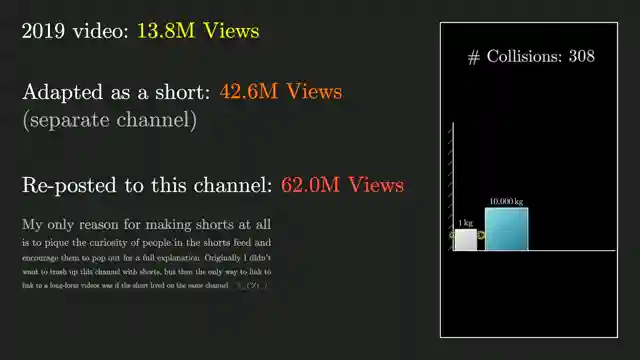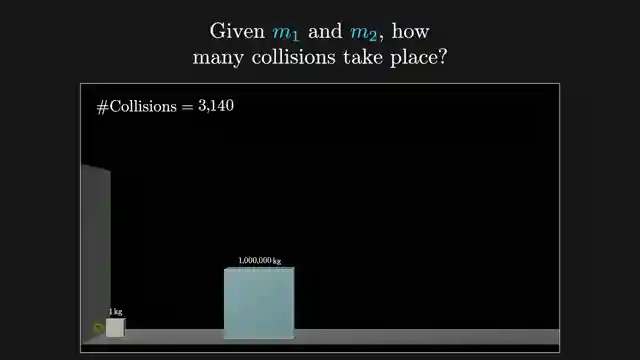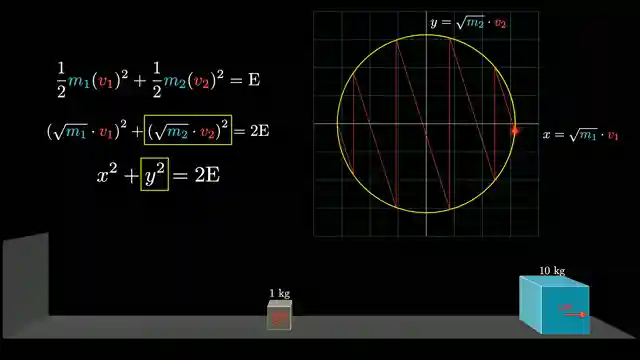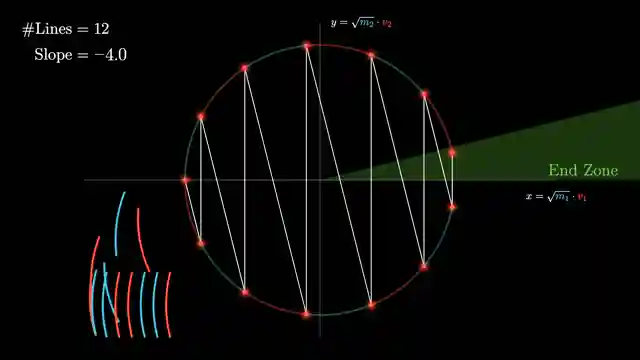Unlocking Pi: Colliding Blocks, Quantum Computing, and Conservation Principles

- Authors
- Published on
- Published on
In a riveting video released by 3Blue1Brown in 2019, the audience was taken on a mind-bending journey into the world of computing pi using colliding blocks. This video quickly became a fan favorite, captivating viewers with its unexpected twists and turns. Now, in a thrilling Pi Day special, the channel revisits this topic with a fresh perspective, delving deeper into the unexplored territories of the original puzzle. What's more, a groundbreaking revelation unfolds as the connection between this seemingly classical problem and the realm of quantum computing is unveiled, specifically through Grover's Algorithm for Search.
The setup is simple yet deceivingly complex: two blocks on a frictionless plane collide with each other and a wall, prompting a quest to determine the total number of collisions. As the mass ratio between the blocks shifts, so does the intricate dance of momentum and energy exchange, leading to a final collision count reminiscent of the enigmatic pi. Despite the puzzle's idealized nature, it serves as a valuable lesson in problem-solving, challenging viewers to think outside the box and embrace the nuances of physics principles like conservation of energy and momentum.
Visualizing the problem in an abstract velocity space adds a layer of sophistication to the challenge, guiding enthusiasts through a maze of ellipses and circles that hold the key to unlocking the mystery. By respecting the symmetries embedded within the problem, a clearer path emerges towards unraveling the numerical conundrum that echoes the digits of pi. Through a meticulous analysis of momentum conservation and the interplay of forces, the solution begins to take shape, offering a glimpse into the interconnectedness of seemingly disparate concepts. Join 3Blue1Brown on this exhilarating journey as they bridge the gap between classical physics puzzles and the cutting-edge world of quantum computing, paving the way for a deeper understanding of the underlying principles that govern our universe.

Image copyright Youtube

Image copyright Youtube

Image copyright Youtube

Image copyright Youtube
Watch There's more to those colliding blocks that compute pi on Youtube
Viewer Reactions for There's more to those colliding blocks that compute pi
Matt Parker's Pi Day video is mentioned as a complement to theory with experiment
The colliding blocks video was influential for someone who is now studying Computing & IT and Mathematics at university
Grant's dedication to improving his videos is praised
The application of circular state space geometry to a mechanical system is interesting
The evolution and improvements in 3Blue1Brown's videos over the years are inspiring
A request for a video on how pi is calculated to a high precision
Discussion about the significance and application of pi in mathematical problems
A mention of a sequel to a favorite 3b1b video
A counterexample in base 7 related to the content of the video
A comment on the association between an isotropic thermodynamic model and elastic collision at 2:41
Related Articles

Decoding Grover's Algorithm: Quantum Computing Demystified
Explore Grover's algorithm and quantum computing concepts clarified by 3Blue1Brown. Learn about translating classical verifier functions, state vectors, and linear transformations in this insightful breakdown.

Unveiling Quantum Computing: Grover's Algorithm Demystified
Explore quantum computing misconceptions and the groundbreaking Grover's algorithm. Learn about state vectors and probabilistic distributions in this illuminating 3Blue1Brown video.

Unlocking Pi: Colliding Blocks, Quantum Computing, and Conservation Principles
Explore the captivating world of computing pi with colliding blocks in this Pi Day special by 3Blue1Brown. Discover the connection to quantum computing, conservation principles, and the intriguing parallels to Grover's Algorithm. A thrilling journey into physics and problem-solving awaits!

Unveiling Cosmic Distances: A Journey with 3Blue1Brown and Terrence Tao
Explore the fascinating history of measuring cosmic distances from parallax to Venus transits. Witness groundbreaking discoveries and astronomical milestones in this cosmic journey with 3Blue1Brown and Terrence Tao.
